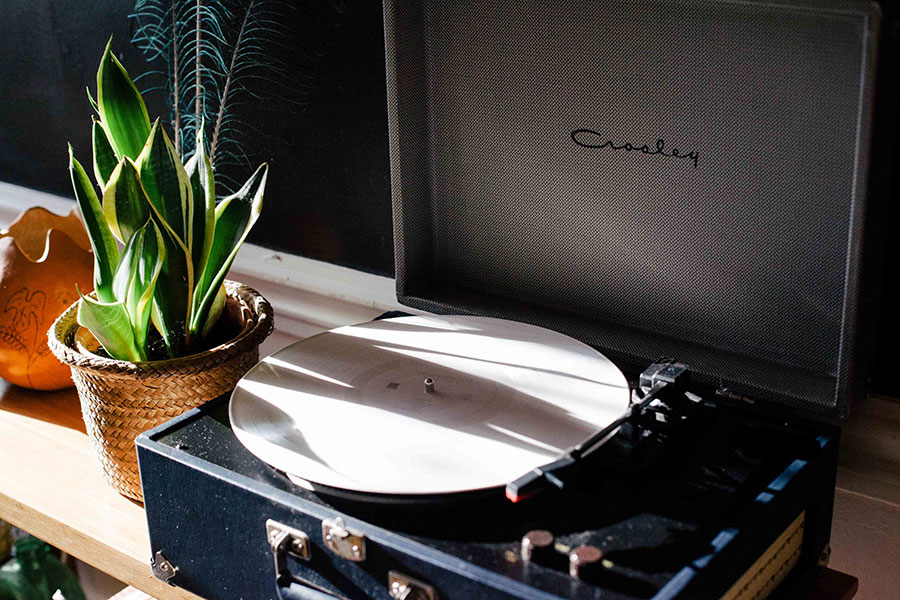花园里是空的哦~
还没有添加花。
动态 (26)
Hande Salcan
2017年05月23日


It can be easy and inexpensive to start garden seeds indoors for spring planting. Here at The Garden Glove, we use several methods. Method #1 – Purchase an inexpensive dome style seed starter from your local garden center or discount store. These usually sell for less than $10, and contain everything except the seeds to get you growing, including a humidity dome to keep in heat, and soil or soil less cubes. The only downside to these is that the growing blocks are usually pretty small, so if you are going to plant fast growing annuals such as sunflowers, morning glories or squash, you might want to wait to just two weeks before last frost. Otherwise, you will have to transplant your seedlings into larger containers as they outgrow the seed dome. This method works very well for growing perennials, since they are slower growing than annuals as a rule. Make sure the growing medium is moist, place the seeds at the depth recommended by the packet, and place the dome on. You will see moisture condense inside the dome. This is great for starting out, as the heat and moisture is trapped in. However, once seedlings start to appear, you MUST remove the dome to prevent “damping off” a fungal disease that will kill the seedlings. Add water as necessary to keep the soil moist, but not wet.

Method #2 – The second method is the most economical one. This is where we plant seed into reusable or recycled containers. These containers must have drainage, and be able to be moved easily. Tupperware, egg cartons or pots made from recycled newspaper are several popular ideas. Placed on a tray, such as an old cookie sheet- they make great planting flats, if not too terribly attractive. It helps when using this method to enclose the entire tray in a clear plastic bag until seedlings appear. This does the same job as the $10 dome, by keeping in heat and moisture. Hee is a tutorial from Hobby Room Diaries on making newspaper pots!

Method #3 – This is my preferred method, and one I just started using two years ago. I picked up a portable greenhouse. It has several metal shelves for seedling flats covered by a poly “tent” to keep in heat and moisture. This makes it very easy for me to move the entire set up outdoors for daylight, and the tent keeps the heat in, even when it hovers near freezing outside. I can grow several hundred seedlings in this setup. I caution you against leaving it outdoors during windy conditions, however. Also keep in mind during sunny days it can heat up inside the greenhouse quite quickly, so make sure you tie up one side and occasionally monitor the temps in your greenhouse. When the weather is warm enough, remove the poly tenting entirely.

Once the seedlings are up, they must have very bright, though not direct light. Using a windowsill during bad weather is acceptable, but to grow healthy and strong, seedlings should be placed in either artificial light, or on a protected porch for much of the day. Make sure you bring them in at night, and don’t leave them out on frosty weather. You can create an artificial light system easily with a cheap shop light from the home improvement store, and a both a warm and cool 40 watt fluorescent tube. It does not have to be one of the more expensive plant growing tubes. Hang the lights from chains off a scrap 2×4 stand. Keep the lights very close to the seedlings, and leave on for at least 12 hours a day. Starting garden seeds indoors will save you money and allow you to grow plant varieties in your garden that are special and unusual. It’s easy, so try starting your seeds indoors today!
文章
Hande Salcan
2017年05月23日


We’ve all loved ’em… the ever dreamed about, garden #hydrangea . So popular, they are the number one wedding flower after roses. So beloved, few people have no memories of a hydrangea moment…yes, especially us girls… They are romantic, and amazing. Sigh…. The good news is, there is a hydrangea to fit most gardens in most areas of the country. Shade or sun, acid soil or alkaline. Yes, they can be a little finicky. Yes, they are absolutely worth it! Here is the skinny on growing the best hydrangeas, for garden or table. (Or both!) Although most of us probably think of the old fashioned mophead hydrangea (H. macrophylla) first, with those amazing balls of bloom in pink or blue, there are other varieties. Oakleaf hydrangeas grow well in partial shade, and lace cap hydrangeas have a more delicate flower. There is also the more heat tolerant PeeGee hydrangea, H. paniculata. And if that isn’t enough variety, there are now the new reblooming hydrangeas, like “Endless Summer”. First, basic hydrangea care, then we will look at the different varieties so that you can choose the right one for your garden! Hydrangea Basics Sun and Shade Most hydrangeas prefer morning sun and afternoon shade, and don’t deal well with hot climates. Coastal climates are ideal, as are cool summer areas. Both too much heat and too little sun can contribute to poor performance for old fashioned hydrangeas. PeeGee hydrangeas deal much better with heat. Oak leaf hydrangeas are perfect for partial shade areas. No hydrangea will bloom in deep shade. Water and Fertilizer Hydrangeas prefer to be evenly moist, and love a fertile spoil. That having been said, when using commercial fertilizers, it’s often advised to use half strength liquid fertilizer so you don’t stimulate too much leaf growth at the expense of the flowers. Pruning Most (except re-bloomers) bloom on old wood, so severe pruning is not necessary. Prune away dead wood each spring, and dead head the flowers that are past their prime to promote the most flowers on each bush. PeeGee and Annabelle hydrangeas are more tolerant. Soil Hydrangeas prefer soil rich in organic matter. You may have heard that you can change the color of a hydrangeas blooms based on soil composition. It’s true that the pink and blue varieties are influenced by the soil ph. You can change a pink hydrangea to blue by adding aluminum sulfate to the soil to make it more acidic. It is pretty difficult to change a blue hydrangea to pink… Problems The biggest problems hydrangea gardeners have is lack of bloom… This is usually caused by one of three things… a late freeze, using a variety that is not intended for your climate, or pruning too much of the old wood away. KariAnne of Thistlewood Farms has a mantel full of beautiful blooms that convince me she’s found the secret! Check out her advice on getting hydrangeas to bloom.

Varieties Mopheads – Hydrangea macrophylla. Traditional pink or blue hydrangeas. Hate summer heat. (Photo – Mopheads on right, Lacecaps on left)

Lacecaps – Hydrangea macrophylla normalis. Lacey and more easily naturalized into the average landscape, these shrubs are less formal, but still amazing specimen plants. Oakleaf – H. arborescens. Oakleaf hydrangea had oak shaped leaves that turn lovely purple and red in the fall, and conical shaped white flowers that bloom in summer. More tolerant to hot summers, tolerant to shade, and tolerant to drier soil. Wonderful garden plant! PeeGee – Hydrangea paniculata. Large conical white to pink blooms, Peegee’s tolerate cold and require several hours of sun a day. They can grow quite large, and are tolerant to pruning, so can be used as a hedge. They also bloom a little later, August and September. They are the only variety that can be pruned into tree form.

Cold zone hydrangeas – Hydrangea arborescens “Annabelle” is a large white flowering variety that blooms and grows well in cold climate zones. Hardy down to zone 3, these flowers can be up to 10 inches across!

Reblooming – Hydrangea macrophylla, the most popular new gaiety of the reblooming mop head is “Endless Summer”. These tend to be smaller shrubs, prefer partial shade, and bloom pink or blue. Reblooming several times over the summer, they are a popular choice for large containers as well.

It’s worth a little extra effort to learn about growing hydrangeas… they can survive in a garden for generations, and are a beloved flower that every gardener should have the chance to grow. UPDATE: Just ran across this new hydrangea from Wayside Gardens I just had to share… Hydrangea ‘Next Generation Pistachio’ is a compact grower, just 3-5 feet, loves a shady afternoon, and has an amazing lime green petal edged with pink! Zones 5-9.

文章




































